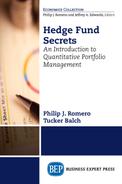Arbitrage, outlined in an earlier chapter, is a strategy that buys an item at one price in order to sell it at a higher price. Prices can differ for many reasons, as explained in the chapter on market efficiency. The founder of value investing Benjamin Graham argued that ignorance or emotion could push the price of a share of stock—and by extension, the value of the entire company—significantly above or below its true, or intrinsic, value. Greed and euphoria during a bull market may prompt investors to bid prices up. Fear can depress prices in a recession. Graham argued that eventually prices would converge to intrinsic value. As he put it, “In the short run the stock market is a voting machine. In the long run, it is a weighing machine.”
Opportunities can therefore occur to buy stocks at a discount when their prices are temporarily depressed from their intrinsic value. Estimating intrinsic value is described in the chapter on valuation. Likewise, hedge funds that identify companies whose troubles are not yet widely recognized can short those stocks in the expectation that their prices will fall when the troubles become widely known.
Graham first detailed his approach to estimating a company’s intrinsic value in his textbook Securities Analysis, written with William Dodd in 1934. Graham wrote a layman’s version, The Intelligent Investor, in 1949. Warren Buffett devoured this book as a student and took his MBA at Columbia, where Graham taught part-time while managing the Graham-Newman Partnership.
In his books and his courses, Graham presented numerous case studies of companies that he considered undervalued. In times of extreme distress such as the early years after the 1929 market crash, some companies’ entire market capitalization was less than the value of the cash they held! In other words, buying a share of stock entitled its owner to a piece of a company whose cash alone was worth more than the share price. The owner got a share of all the company’s other assets, for free.
Graham knew that his valuation methods weren’t foolproof. Their assumptions could be in error, and the world might deliver unfortunate surprises. Therefore, his core idea was not merely to buy as stock at a discount to intrinsic value, but at a large enough discount to provide a “margin of safety” to hedge against surprises (external, or flaws in his analysis). Warren Buffett, Graham’s greatest living protégé, often recommends the margin of safety chapter in Graham’s book as essential reading for any budding investor.
The Education of Warren Buffett
Buffett was born in Omaha in 1931. His father Howard Buffett was a stockbroker. Howard served in Washington, DC in the late 1930s and early 1940s as a Republican Congressman, where he was an implacable foe of Franklin Roosevelt’s New Deal.
Watching his father’s brokerage business struggle during the depression, Warren became obsessed with making money. He approached even typical teenage rites of passage as experiments in capitalism. As a 12-year-old paperboy, he sought out apartment buildings for his route: He could stand at one end of a hallway and toss papers onto each doorstep, making deliveries in much less time than to individual houses. When he became enamored of pinball in high school, he bought a pinball machine, installed it in a teenage hangout, and earned a nickel every time it was played.
Finding college unchallenging, Buffett applied for his MBA at Columbia, for one reason: Ben Graham taught there as an adjunct professor while running his investment partnership. Buffett cultivated Graham as a lifelong mentor and briefly worked at Graham-Newman after business school. When he returned to Omaha in the mid-1950s (in his mid-20s) he had absorbed Graham’s approach, which emphasized stocks that were cheap relative to their intrinsic value—to the assets they owned. Buffett called this the “cigar butt” approach: Cigar butts discarded on the street that might have a few last puffs in them.
For about a decade (from 1957 to 1968), Buffett uncovered undervalued companies and purchased positions on behalf of his limited partners in Buffett Partnership, beating market indexes by as much as threefold. Even in his early years, Buffett deviated from a pure Graham cigar butt approach. In particular, Buffett was willing to make big bets, putting much larger proportions of his portfolio in a company than Graham thought prudent. Today, with a market capitalization approaching $500 B, Buffett is still willing to concentrate over 50 percent of Berkshire’s $120 B investment portfolio in handful of holdings (three or four).
In the late 1950s, Buffett was introduced to Charles Munger, Jr., a Los Angeles attorney with a strong interest in entrepreneurship. This began a 60-year partnership, with Munger serving as Berkshire’s longtime vice chairman. Munger stressed the importance of understanding the businesses in which he invested. As Buffett has explained it, Munger persuaded him that it was better to buy a great business (one with a sustainable competitive advantage that Buffett called an “economic moat”) at a fair price than a good business at a bargain price. Using this approach Buffett has outperformed market indexes more than twofold for over 50 years, a record unlikely ever to be exceeded.
